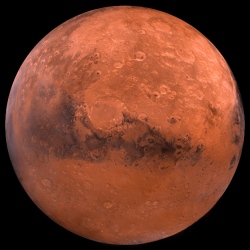
NASA is aiming for 2030 to send humans to Mars but it’s still unclear how astronauts will stay on the planet. The budget allocates $55 million in 2016 to get the process started with a deep space habitat; congress expects a prototype by 2018. The Orion Spacecraft, which will transport astronauts, isn’t the most spacious of flying vessels.
For astronauts to be able to sleep, grow food, exercise and do experiments on Mars, they’re going to need much larger living quarters. At this preliminary stage, NASA envisions a module that can link up with the Orion capsule, likely in orbit around Mars.
There’s still no definitive information on how the astronauts would reach the surface, and it’s anyones guess as to what the astronauts will live in once they get to Mars. A private company, Bigalow Aerospace, is pioneering a deep space inflatable habitat that NASA might be interested in.
NASA expects to test a deep space habitat around the Moon in the 2020s, in hopes that it will be ready in the 2030s for the Journey to Mars mission.
Whether NASA will have a some-what working prototype ready by 2018 seems debatable. The major challenges include building a mechanism to land on the surface, shielding astronauts from radiation and making it light enough, not to mention food, hygiene, air to breathe and gravity on Mars.
The habitation module is part of the new NASA budget that was released a few weeks ago. Congress set aside more money for the space agency than President Obama had asked for: about $19.3 billion for 2016.
